Metal Trusses vs Wood Trusses: What’s Better?
Whether you’re building a residential home, a commercial building, or an agricultural structure, you’ll need a roof to top your building off, so choosing the right type of truss is a critical decision.
Trusses are the framework that supports your roof, and they play a crucial role in the overall stability and durability of the building. Whether you should use wood or metal trusses comes down to what your building needs.
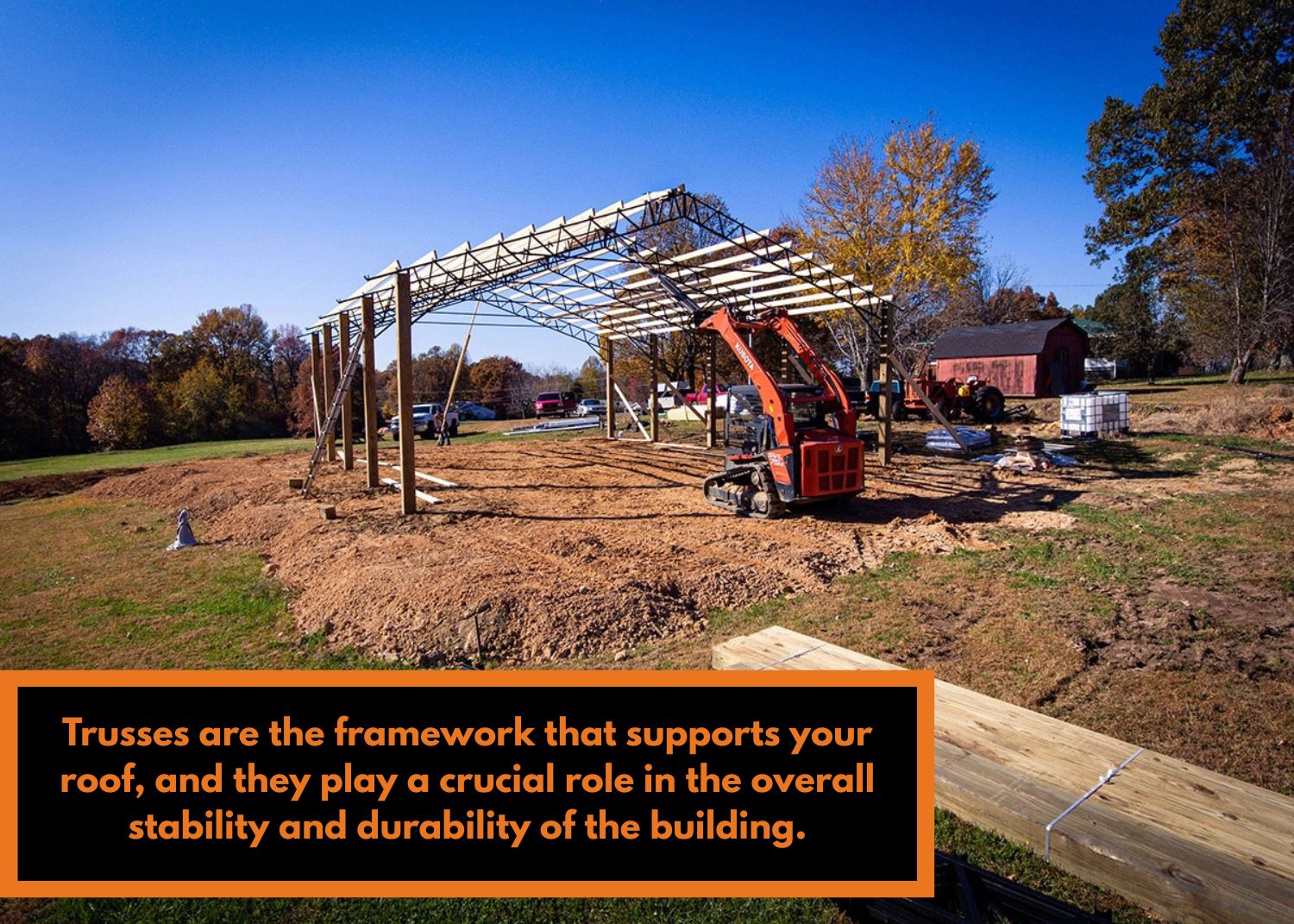
At Buffalo River Truss, supplying quality trusses is our bread and butter! While we specialize in metal trusses, this blog will help you determine which type is right for you by exploring the key differences between metal and wood trusses, focusing on durability, cost, installation, and long-term value. We’ll also highlight why metal trusses are often superior for pole barns, riding arenas, and agricultural structures.
Let’s get started!
Table of Contents
Trusses: Understanding the Basics
Trusses are structural frameworks designed to distribute weight efficiently to support roofs and other loads. They are typically prefabricated and installed as a complete unit, providing a stable and robust support system.
The main components of a truss are the top chord, bottom chord, and web members. A simple way to visualize the basic truss shape is a triangle with the angled roof pieces forming the top chord. The horizontal beam that connects the bottom ends of the top chord is called the bottom chord, and the pieces connecting the top and bottom chords inside the shape in a zigzag pattern are called the web members.
How does it all work? The top chord bears the tension and compression stresses of the structure, while the bottom chord, usually a horizontal beam, supports the entire truss assembly.
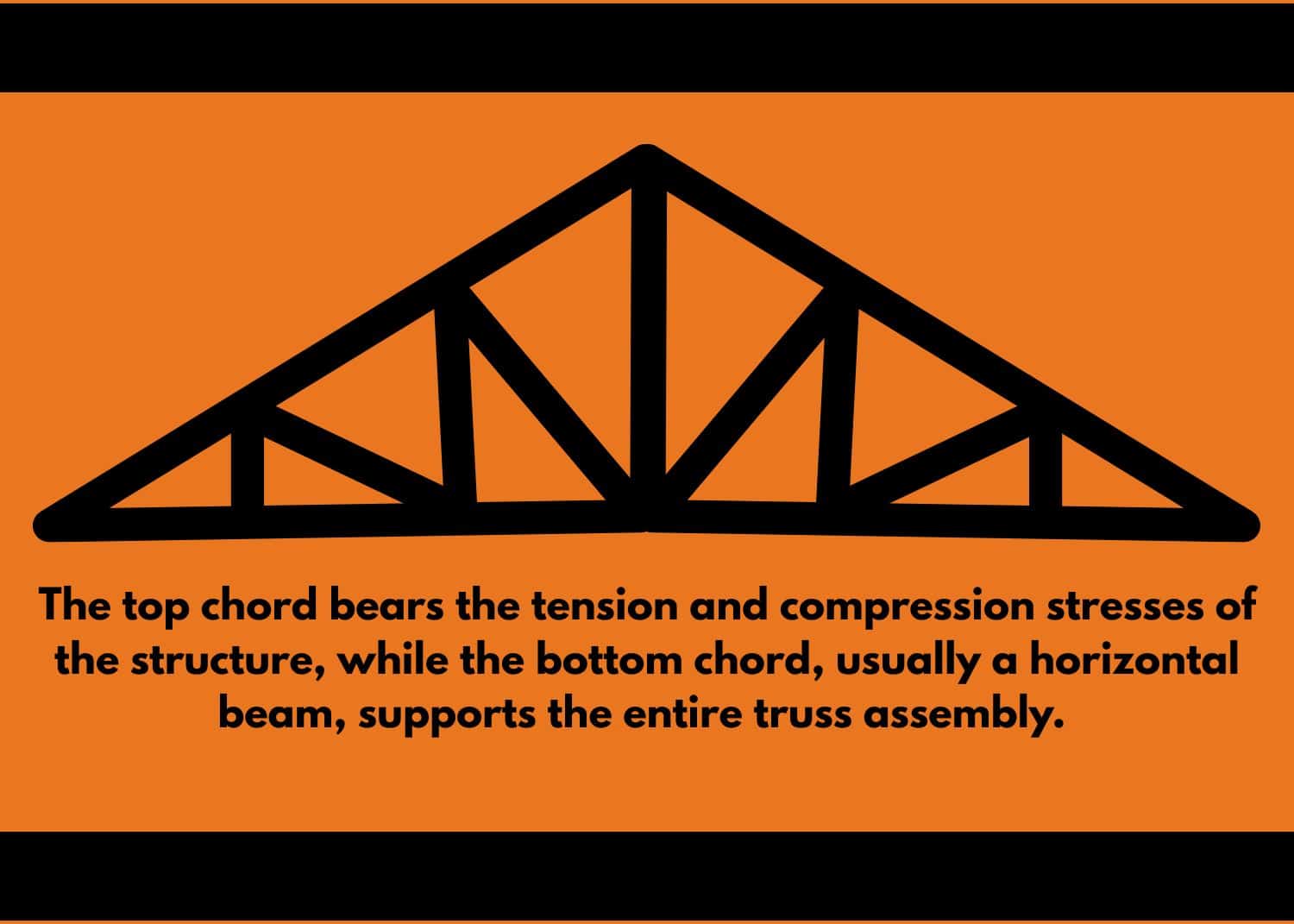
The top and bottom chords join together into a triangular assembly. Finally, the web members run up and down the insides of the chord like a web, supporting and distributing the structure's weight.
Metal vs. Wood Trusses
Trusses are essential components in construction, providing structural support and defining a building's integrity. When choosing between metal and wood trusses, several factors must be considered, including the type of project, environmental conditions, budget, and desired longevity.
Metal Trusses: Pros and Cons
Pros:
- Durability: Metals, typically used in commercial and industrial applications, are highly resistant to environmental factors such as moisture, pests, and fire, making them an excellent choice for structures exposed to harsh weather conditions or those requiring long-term durability.
- Strength: Metal trusses can support heavier loads than wood trusses. This is particularly beneficial for large structures with long spans, such as bridges, warehouses, and arenas, which require additional internal support for long spans.
- Longevity: With proper maintenance, metal trusses can last significantly longer than wood trusses, providing long-term value and reducing the need for frequent replacements.
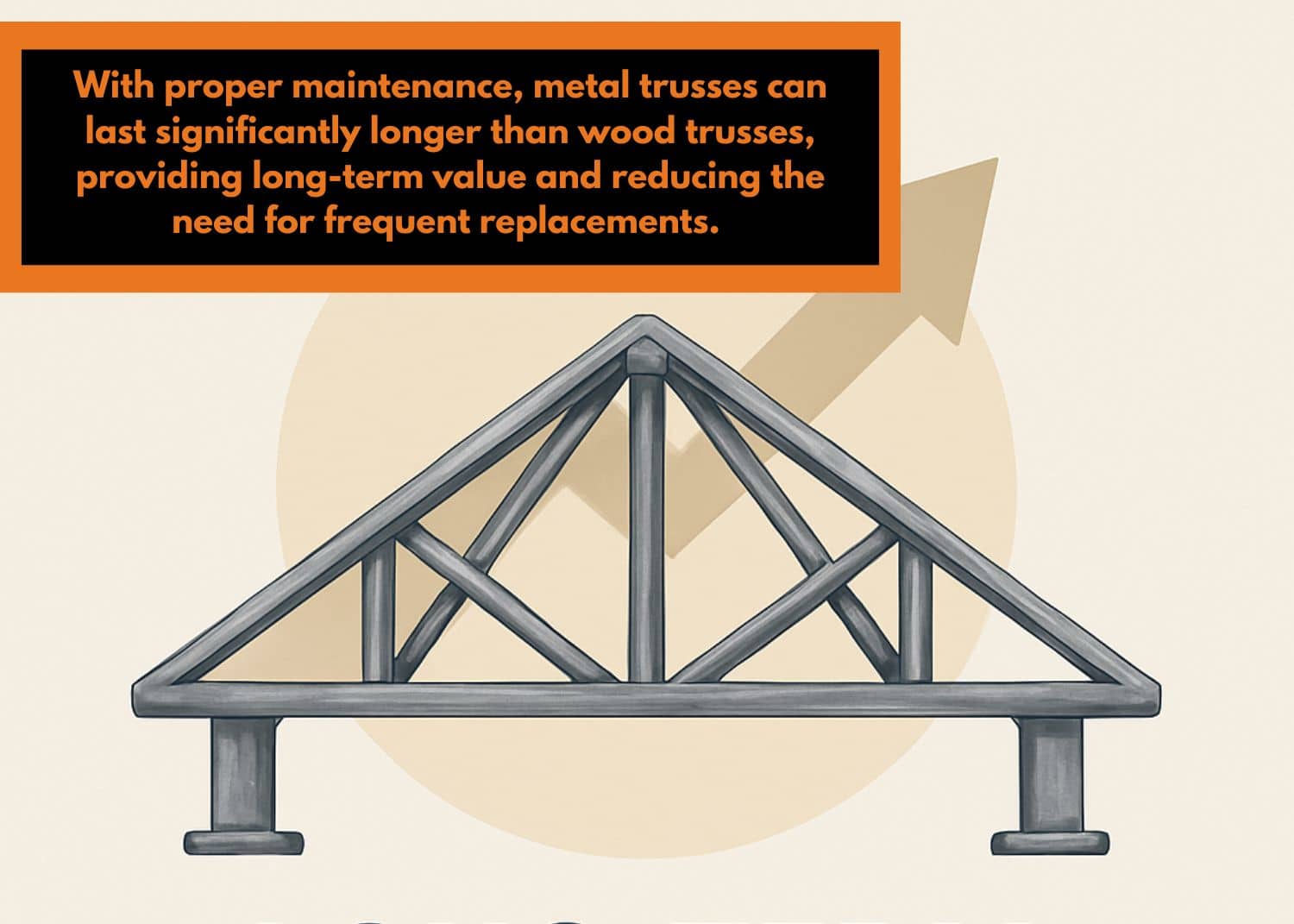
- Fire Resistance: Metals like steel are non-combustible, providing an added layer of safety in fire-prone areas. While structural steel is not indestructible, fireproofing such as spray-applied fire-resistive materials (SFRM) or intumescent paints will buy more time for firefighters to arrive.
Cons:
- Cost: Metal trusses can be more expensive initially than wood trusses, primarily due to the cost of materials, manufacturing, and transportation processes. Mistakes can be costly, as replacements must be remanufactured offsite, so care must be taken at all stages of construction.
- Thermal Conductivity: Metal is a good conductor of heat, which can increase energy costs if a building is not adequately insulated. Specialized materials are needed to insulate the building.
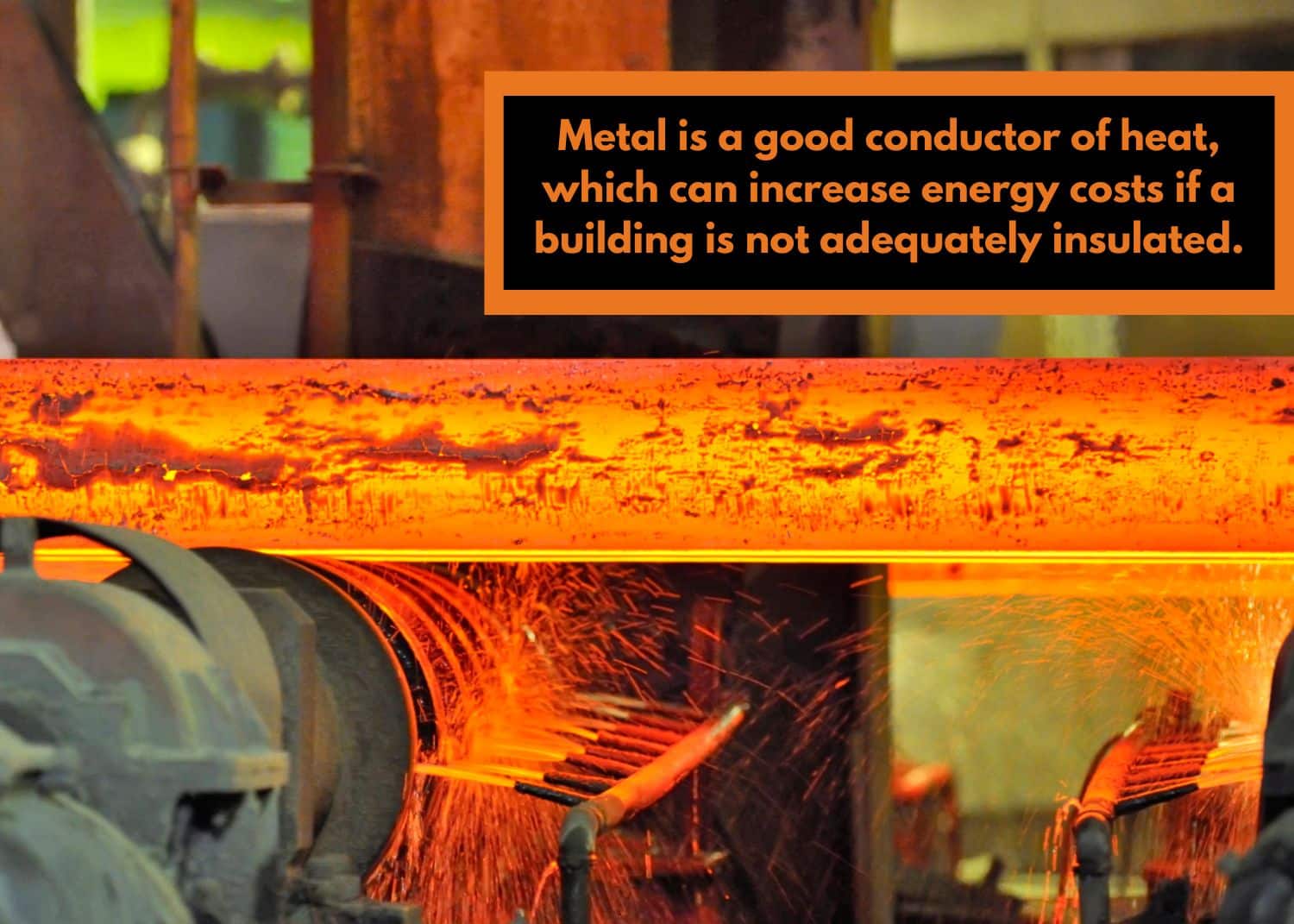
- Corrosion: Metal trusses may be susceptible to corrosion if not treated or maintained correctly in specific environments, such as tropical or coastal regions. Coatings and corrosion inhibitors can help protect the steel.
Wood Trusses: Pros and Cons
Pros:
- Cost-Effective: Wood trusses are generally more affordable than metal trusses, making them an attractive option for budget-conscious projects. Wood is also more easily accessible, so replacements can be made quickly.
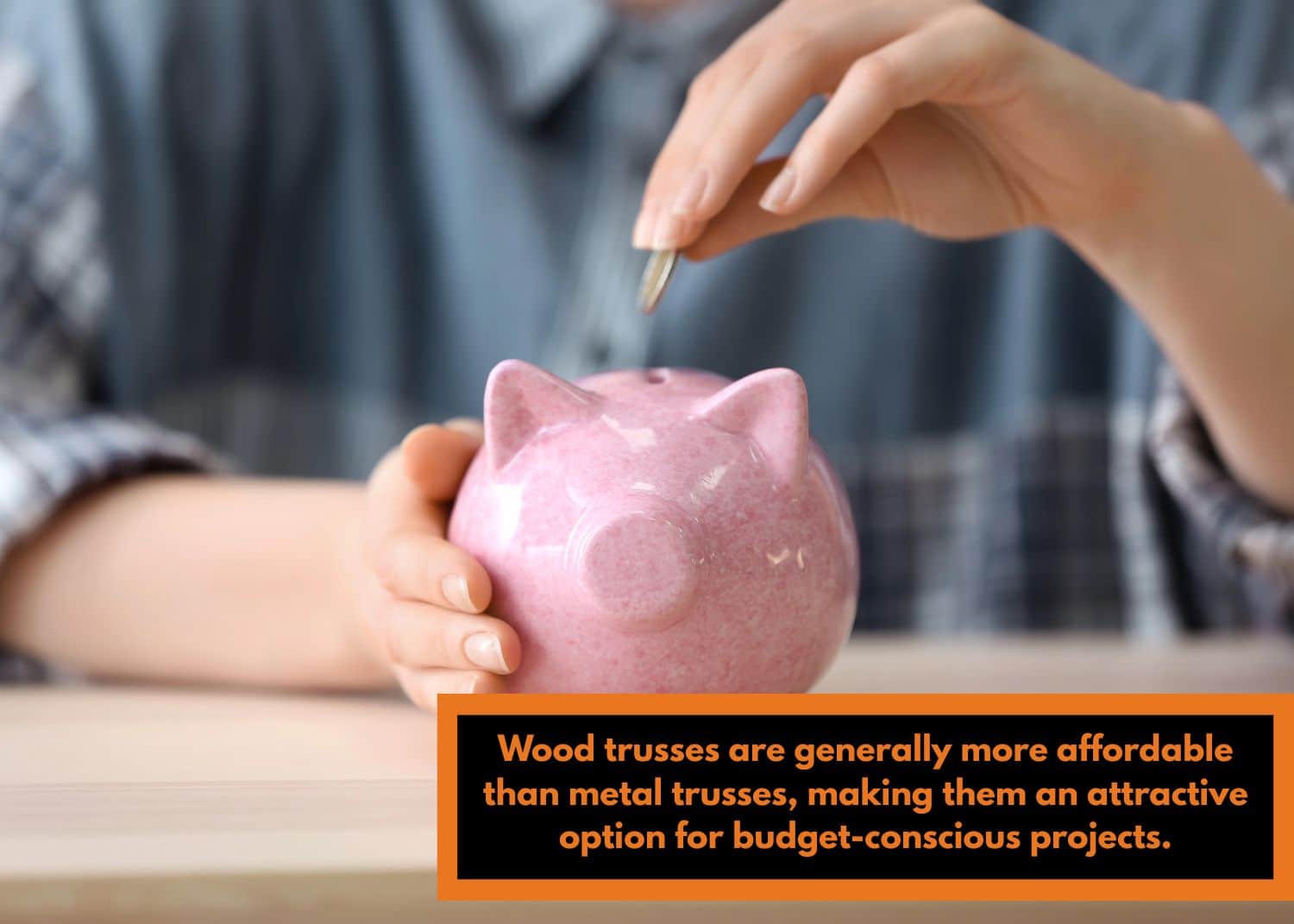
- Ease of Installation: Wood trusses are often easier and quicker to install. Using truss connector plates to join the components can reduce labor costs and construction time.
- Aesthetic Appeal: When natural timber is used to build trusses using traditional joinery, the wood trusses look natural, warm, and majestic, which makes them especially desirable for residential projects.
Cons:
- Vulnerability to Pests and Rot: If not cared for, wood is susceptible to damage from pests like termites and can rot when exposed to moisture over time. Excessive heat tripped in the attic may warp the wood or result in shingles cracking, causing leaks that result in moisture buildup, eventually leading to mold growth.
- Fire Risk: Wood is a combustible material that can pose a fire hazard. Fire retardant treatments are essential for wood used in buildings.
- Maintenance: Wood trusses require regular maintenance to prevent rot, pest infestation, and warping.
Weather Resistance: Metal vs. Wood in Extreme Conditions
Other than metal’s poor insulative properties against the cold, metal trusses have a clear advantage over wood trusses in terms of weather resistance. Metal is inherently resistant to many elements that can degrade wood, such as moisture, pests, and UV radiation.
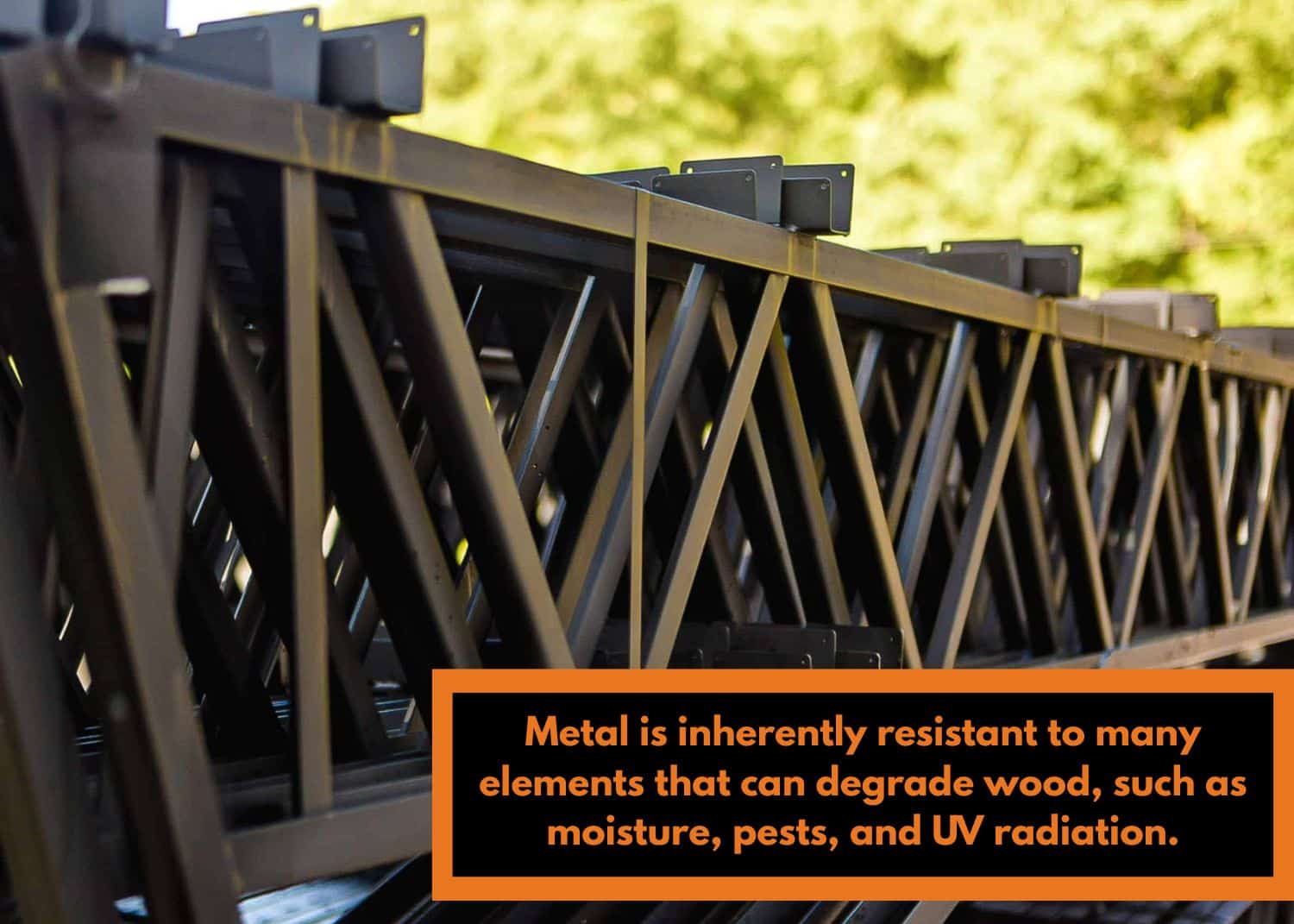
Metal trusses provide superior durability and reliability in areas prone to extreme weather conditions, such as hurricanes, heavy snowfall, or high humidity.
While treated to resist some environmental factors, wood trusses are more vulnerable to damage from prolonged exposure to moisture and pests. In regions with harsh climates, the maintenance required to keep wood trusses in good condition can be significant.
Cost Considerations: Initial Investment vs. Long-Term Savings
While the initial investment for metal trusses is typically higher than that for wood trusses, the long-term savings can outweigh the upfront costs. Metal trusses require less maintenance and have a longer lifespan, which can result in significant savings over time. Additionally, metal trusses can enhance the resale value of a property due to their durability and low maintenance requirements, making them a desirable option for commercial or industrial properties due to their lower overhead requirements.

Wood trusses, on the other hand, offer a lower initial cost, which can be appealing for projects that require speed and tight budgets. However, the ongoing maintenance and potential for repairs can add up over the years, potentially making them more expensive in the long run.
Installation and Maintenance: Which Truss Type Is More Efficient?
In terms of installation, wood trusses are generally more straightforward and quicker to install than metal trusses. This can translate to lower labor costs and faster project completion times. However, the maintenance requirements for wood trusses are higher, as they need regular inspections and treatments to prevent damage.
While metal trusses can be more complex to install, they require minimal maintenance once in place, providing a significant advantage for property owners who prefer a low-maintenance solution.
Best Uses: When to Choose Metal Trusses Over Wood
Metal trusses are particularly well-suited for large-scale structures and those exposed to harsh environmental conditions. They are an excellent choice for:
- Pole Barns: Metal trusses provide the strength and durability needed to support large roofs and withstand the elements. They also offer ample room for storage, recreation, or even homes.
- Riding Arenas: The open spans required for riding arenas benefit from the strength of metal trusses, which can support large, unobstructed spaces.
- Agricultural Structures: Metal trusses offer superior resistance and longevity in environments where moisture and pests are concerns.
Best Uses: When to Choose Wood Trusses Over Metal
Wood trusses can be a great choice for projects where budget constraints are a primary consideration or where the aesthetic appeal of wood is desirable. They are ideal for:
- Residential Homes: While stick-built homes typically keep trusses hidden in the attic, Exposed timber trusses can enhance the aesthetic of residential properties, especially when factored into the architectural design. The lower cost of wood or timber (which, while more expensive than lumber, is still significantly cheaper than structural steel) can also appeal to homeowners.
- Small-Scale Projects: Wood trusses can provide an economical and effective solution for smaller structures where the load requirements are not as demanding.
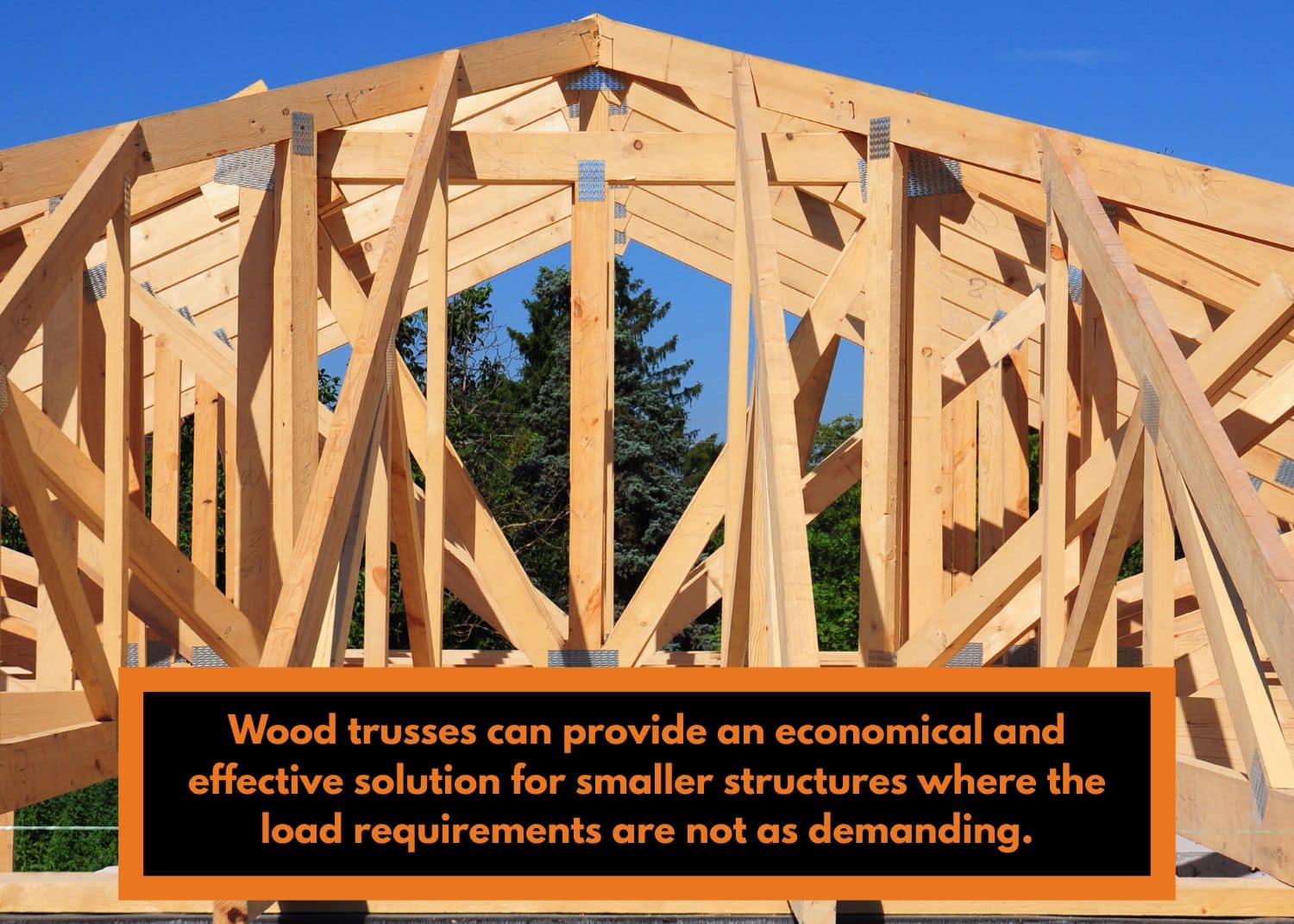
- Renovations and Additions: Wood trusses can be easier and quicker to work with in renovation projects where matching existing materials is important.
Metal trusses are often the better choice for large-scale projects, agricultural buildings, and structures in harsh climates. Their resistance to weather, pests, and fire offers peace of mind, and their long lifespan can result in significant savings over time.
Conclusion
Choosing between metal and wood trusses depends on various factors, including your project's specific requirements, environmental conditions, and budget. While wood trusses offer certain advantages, such as lower initial costs and ease of installation, metal trusses provide superior durability, strength, and long-term value.
Buffalo River Truss, established in 2014, specializes in constructing high-quality metal trusses. We prioritize using superior materials and adhere to industry-leading welding techniques. Our extensive experience and expertise enable us to deliver exceptional metal trusses that elevate agricultural structures' functionality and visual appeal.
Contact us today to find out how we can build you a truss you can depend on!








